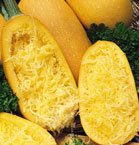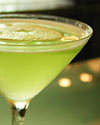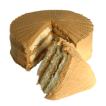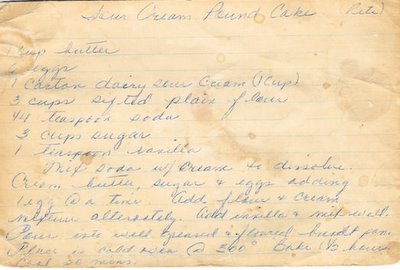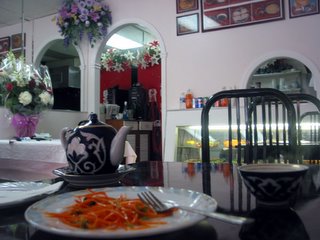
During the summer and fall months of 2005, I belonged to a wonderful organic CSA (Community Shared Agriculture) from
Norwich Meadows Farm in upstate New York. Each week I brought home seven to 12 pounds of fresh vegetables, and every other week I also got one of a variety of cheeses and of yogurts, and a whole frozen organic chicken.
Now, I like chicken quite a bit. Moreover, I like my chicken local, organic, free-range, and cheap. But I don’t necessarily need a whole one every other week. And so it came to pass that local, organic, free-range, whole chickens accumulated in my freezer.
My CSA ended in late October; I used the last of the chickens yesterday. In celebration of this fact, I would like to dedicate this post to my frozen chickens, which I have so enjoyed.
#1: Most Ambitious – ROASTED CHICKEN WITH ORANGE, LEMON AND GINGER
Maybe this recipe only seemed ambitious to me because I had never roasted a whole anything before…actually, following the directions from the recipe was relatively easy, and left some room for creativity. I also benefited from the superlative directions and illustrations for “stringing up” whole birds in
Essentials of Cooking by James Peterson, which was a pre-college gift from my brother (thanks, Shannon!). The recipe itself is from
Cucina Ebraica: Flavors of the Italian Jewish Kitchen by Joyce Goldstein.
I N G R E D I E N T S
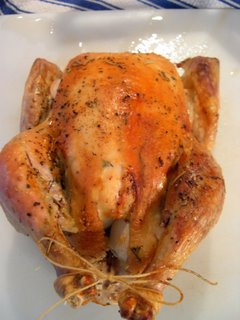
1 lemon
1 roasting chicken, about 5 pounds (thawed, obviously)
Grated zest of 1 lemon, then lemon cut into quarters
Grated zest of 1 orange, then orange cut into quarters
3 tablespoons peeled and grated fresh ginger root
Salt and freshly ground black pepper
5 tablespoons olive oil
4 tablespoons fresh lemon juice
1/2 cup fresh orange juice
3 tablespoons honey
Orange sections for garnish
D I R E C T I O N S
Preheat an oven to 350ºF.
Cut the lemon into quarters. Rub the outside of the chicken with one of the lemon quarters, then discard.
In a small bowl, stir together the lemon and orange zests and 1 tablespoon of the grated ginger.
Rub this mixture evenly in the cavity. Put the lemon and orange quarters inside the bird.
Place the chicken on a rack in a roasting pan. Sprinkle it with salt and pepper.
In the now-empty small bowl, combine the olive oil, lemon and orange juices, honey, and the remaining 2 tablespoons ginger. Mix well.
Place the chicken in the oven and roast, basting with the citrus juice mixture at least 4 times during cooking, until the juices run clear when the thigh is pierced with a knife, about 1 hour.
Transfer to a serving platter and let rest for 10 to 15 minutes. Carve the chicken. Garnish with orange sections.
This recipe turned out beautifully, even for a first-go at roasting, and looked/tasted more difficult than it was. Using a strongly-flavored olive oil helped the recipe quite a lot (but isn’t that always my opinion?). I served it at a little dinner get-together in my apartment, where I don’t have a dining table! I put all the food on my coffee table, and everyone sat on pillows around it on the floor. Sometimes college is a funny place.
#2: Most Southern – CHICKEN AND DUMPLINGS
This recipe is great for four reasons: 1) my mom taught me how to do it; 2) her mom taught her how to do it; 3) it’s always a crowd-pleaser, and 4) all you need on hand (besides the ever-present frozen chicken) is flour and a
Big Pot. This makes it a good recipe for barren college kitchens.
(You’ll have to pardon the “approximate” nature of this recipe—that’s just what comes of learning to do something just by watching it be done.)
I N G R E D I E N T S
1 whole chicken, thawed
Quite a lot of flour
D I R E C T I O N S
Boil your chicken in a Big Pot. If you are in college and don’t have a big pot…well, that sucks, but worst-case scenario, you can cut the chicken into pieces (which is hard) and distribute it between two pots. I possess a medium-big pot, and it’s always a choice between the labor of hacking up the chicken and the greasy, burned-on splashes on my stovetop from a too-full, medium-big pot.
But anyway, boil your chicken in water, salt, and whatever pot combination suits you. Cook thoroughly (at least a half-hour and probably more, depending on the size of your bird). Remove bird from pot to cool; reserve broth.
(In the winter, I’ve been known to open the window by the stove a bit and set the cooked bird on the sill to cool.)
Filter broth through a strainer or cheesecloth and return to Big Pot.
When chicken is cool enough to handle, remove meat from bones and split into bite-sized pieces. Discard bones.
Bring broth to a boil. Spoon flour into separate mixing bowl; make a small indentation in the middle of the flour and fill with warm water (about a half-cup of water for every 2 cups flour). Combine flour and water with fork or hands until just combined; texture should be stretchy.


Briefly knead dough on floured surface; roll out to an eighth-of-an-inch thick (if you’re in college and don’t have a rolling pin, use a wine bottle). Dough should spring back when rolled thin. Cut dough into 1-inch wide, 3-inch long strips.
Drop strips, one at a time, into boiling broth. Boil 2 minutes; reduce heat and add chicken. Combine evenly; add black pepper to taste and salt if needed. Remove from heat. Serve hot and delicious.
(By the way, can I just mention HOW MUCH the yuppie, “gourmet” versions of this recipe on epicurious/the rest of the internet irritate me??? Chicken and dumplings are NOT the same as pot pie or freakin’ SOUP. Don’t go putting a bunch of carrots and celery and peas in it. That’s just wrong. It's sort of the same reason I didn't bother posting a picture of C&D--it's mission is not to be
pretty! It's doesn't
look good - that's not the
point! Ugh.)

#3: Supreme Comfort Food – MOM’S CHICKEN SOUP
I was talking to my sister about it the other day, and we both concluded that, solely armed with this soup, we have made friends, coerced people, healed the sick, and eased breakups (okay, that was probably me). This is the best soup ever. EVER.
I N G R E D I E N T S
1 whole chicken (thawed)
Broccoli, chopped until bite-sized, as much as desired (I use one whole head of broccoli)
Carrots, sliced, as much as desired (I go for about a cup)
2-3 cups egg noodles
Salt, to taste
Black pepper, freshly ground, to taste

D I R E C T I O N S
Boil and de-bone chicken, as described in previous CHICKEN AND DUMPLINGS recipe. Strain broth; chill if time permits.
Skim fat off broth. (If you haven’t had time for broth to chill, there’s a cool trick you can do with ice cubes: drop in a handful and promptly remove them—the fat will cling to the ice cubes. Thanks, Mom!)
Bring broth to a boil over medium-high heat; add egg noodles and cook about five minutes. Salt if necessary.
Add broccoli, carrots and chicken; boil 2 minutes, or until vegetables are slightly cooked but still crunchy.
Remove from heat; pepper and serve.
#4: Healthy Alternative – MEXICAN CHICKEN SOUP
I created this soup myself based on the flavors I discovered in some excellent soup at
Rice, but I think it resembles other Mexican chicken soups fairly closely, but without the onions. I, for one, don’t care from
pico de gallo in my soup, so this was a delicious alternative.
I N G R E D I E N T S
1 whole chicken (thawed)
½ cup yellow corn kernels (frozen are fine; fresh are, of course, better)
1 cup (cooked) long-grain white rice
Juice of 1 lime
1 small tomato, diced
¼ cup chopped cilantro
1 avocado, cut into bite-sized pieces
Cracked red pepper
D I R E C T I O N S
Boil and de-bone chicken, as described in CHICKEN AND DUMPLINGS recipe. Strain broth, chill if time permits, and skim off fat. Shred chicken.
Put broth in large saucepan over medium heat. Add corn kernels and cooked rice.
(Interjection/really easy cheat: use leftover-Chinese-food rice after it’s dried out in the fridge for a day or so. It’s the perfect amount/texture and saves you the trouble of cooking rice.)
Add chicken, lime juice, and tomato; stir 1 minute or until hot. Remove from heat.
Add cilantro and avocado; salt and (red) pepper to taste. Serve immediately.

A haiku:
Ah, frozen chickens
You have stayed me through winter!
Have my humblest thanks.
FOOTNOTE: if anyone with authority over these recipes (Mom, Nana, or Kim, for example) has suggestions or changes, please leave them in your comments and I will be sure and make adjustments. Your humble apprentice,
-me
 Wanted something yummy for breakfast, so I threw these together. *I used raspberry jam in the center because that’s what I had, even though they’re strawberry muffins—but actually, the berry flavors were nice together. I invite you to use strawberry jam (or any other kind of jam) if you see fit.
Wanted something yummy for breakfast, so I threw these together. *I used raspberry jam in the center because that’s what I had, even though they’re strawberry muffins—but actually, the berry flavors were nice together. I invite you to use strawberry jam (or any other kind of jam) if you see fit.
 DIRECTIONS
DIRECTIONS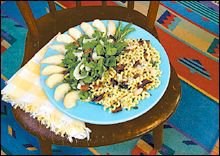







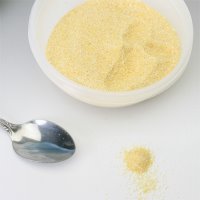


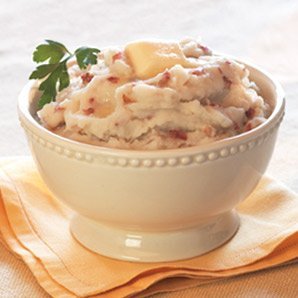





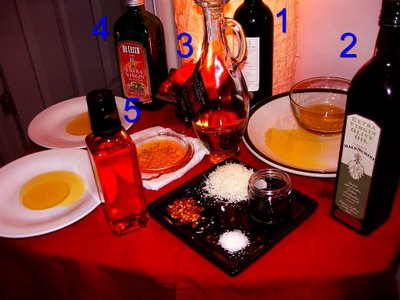 Our conclusions:
Our conclusions: